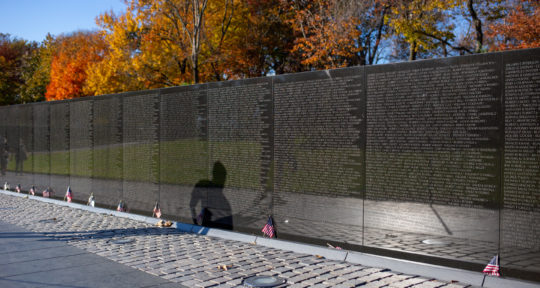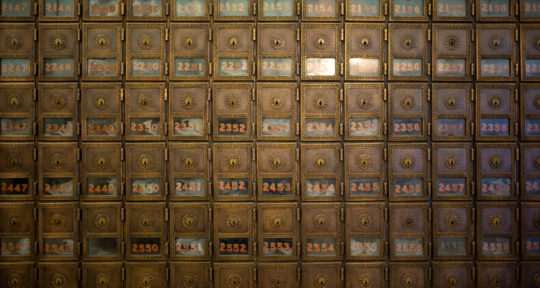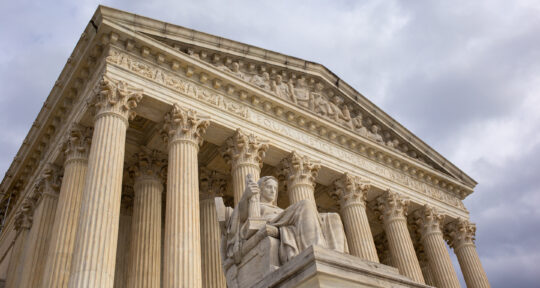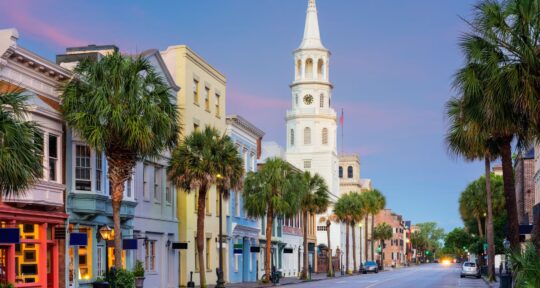On November 11, 1963, then-President John F. Kennedy visited Arlington National Cemetery for Veterans Day services. Eleven days later, he was assassinated in Dallas—and on November 25, 1963, interred in a 20-by-30-foot plot at the Virginia cemetery, surrounded by a white picket fence and the persistent glow of an eternal flame.
Established during the Civil War, today the cemetery is controlled by the United States Department of the Army. With 400,000 interments, and almost 7,000 new burials every year, the national cemetery is one of the largest in the country—but not everyone is allowed to spend eternity here. Burials are more or less restricted to former or active-duty service members and their families, although Congress has voted to strip the honor from certain individuals who would otherwise be eligible (Oklahoma City bomber Timothy McVeigh, a veteran of the Persian Gulf War, inspired a House vote in 1997).
I first visited Arlington in the early 1990s. Unlike most first-time visitors, I wasn’t on a class field trip in the spring; my family had piled into our station wagon and headed to Washington, D.C., from Ohio in the middle of August. I was 8 years old and I had packed a few cheap, disposable cameras. While my thumb is featured prominently in most of the photos I took, I was transfixed by trying to capture JFK’s flickering flame on film.
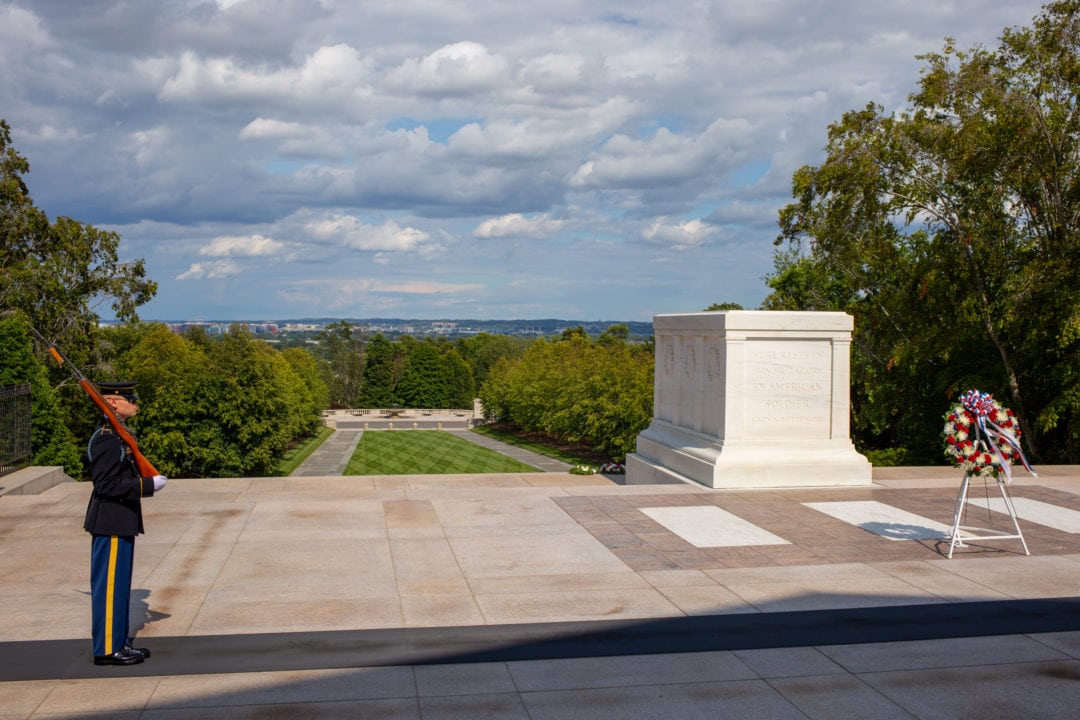
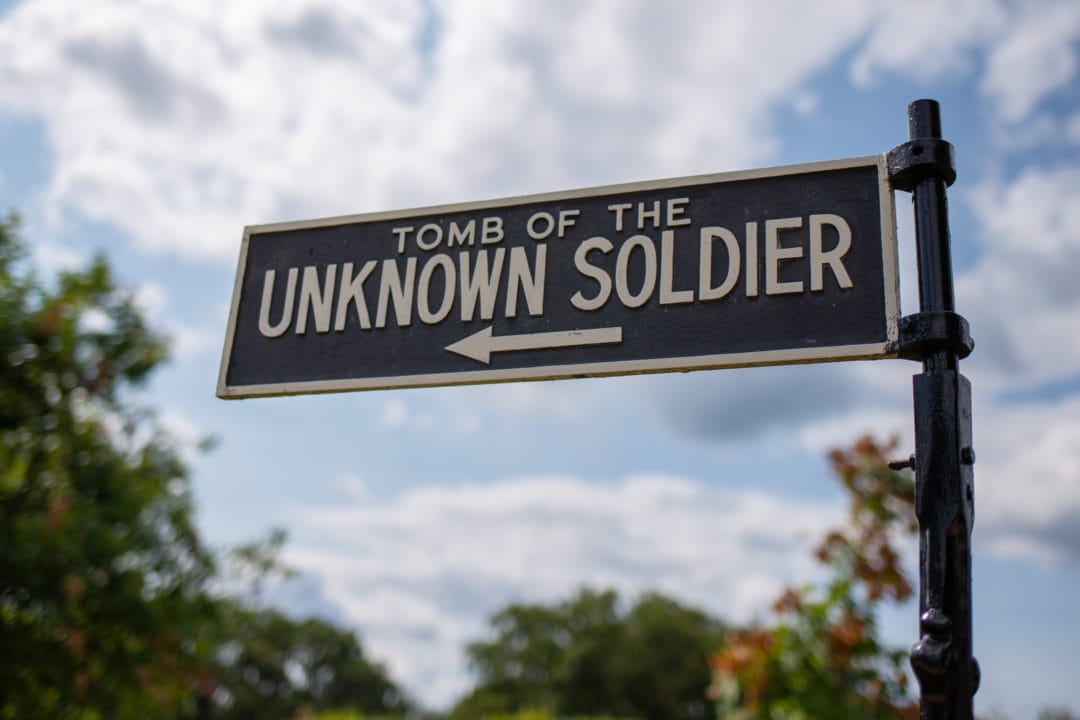
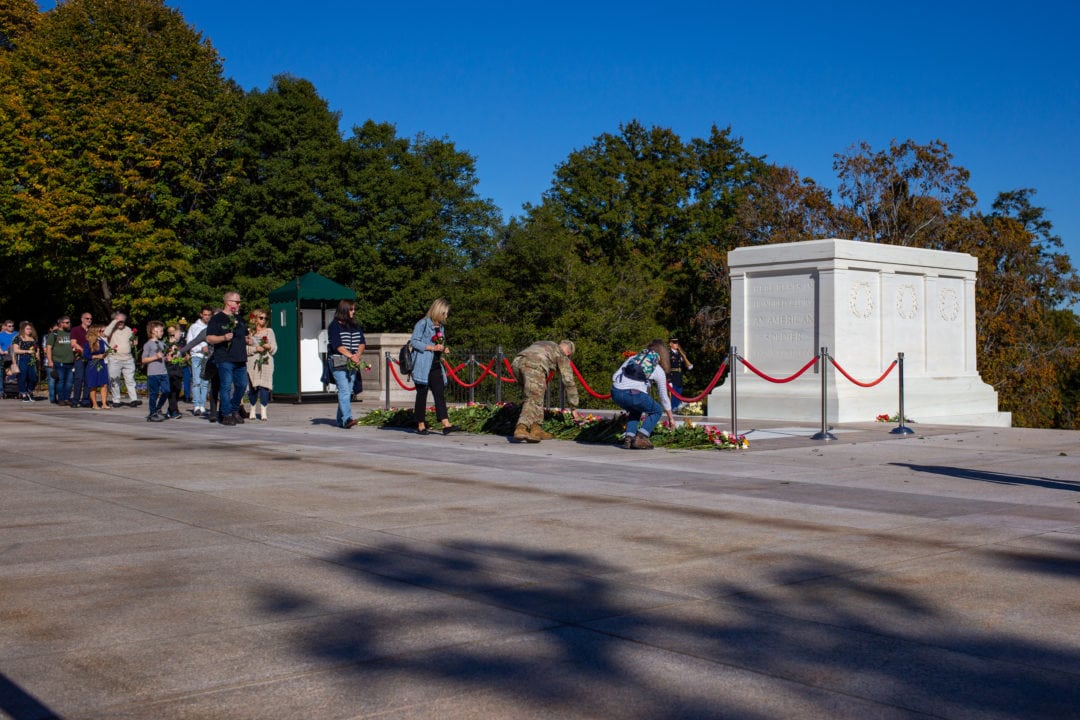
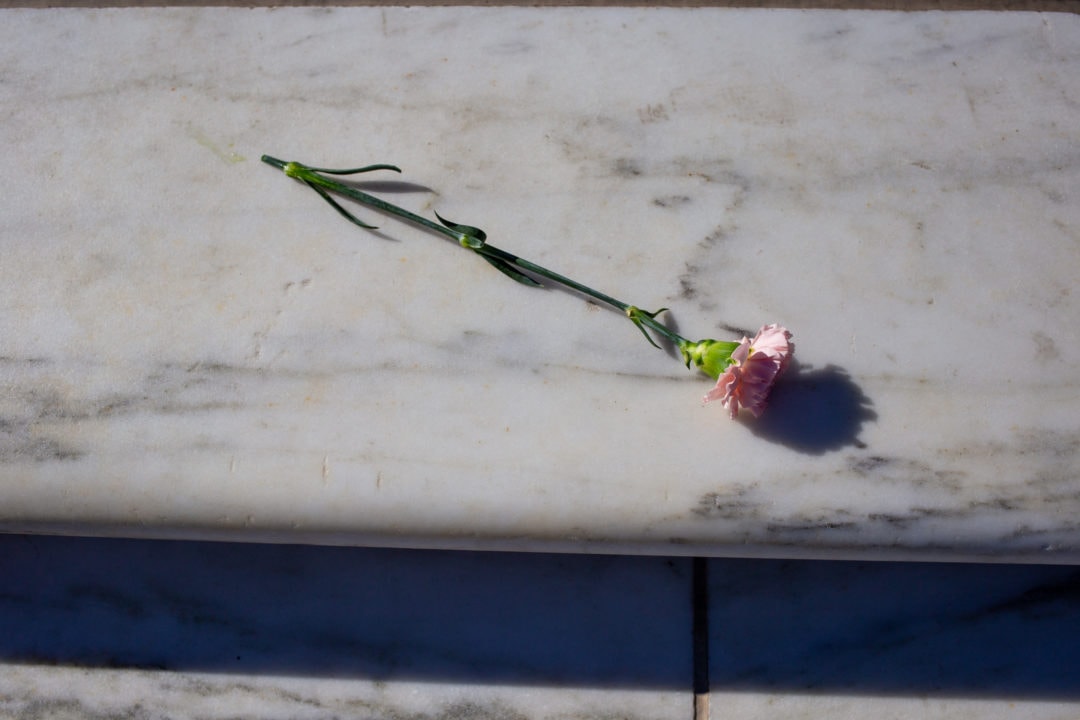
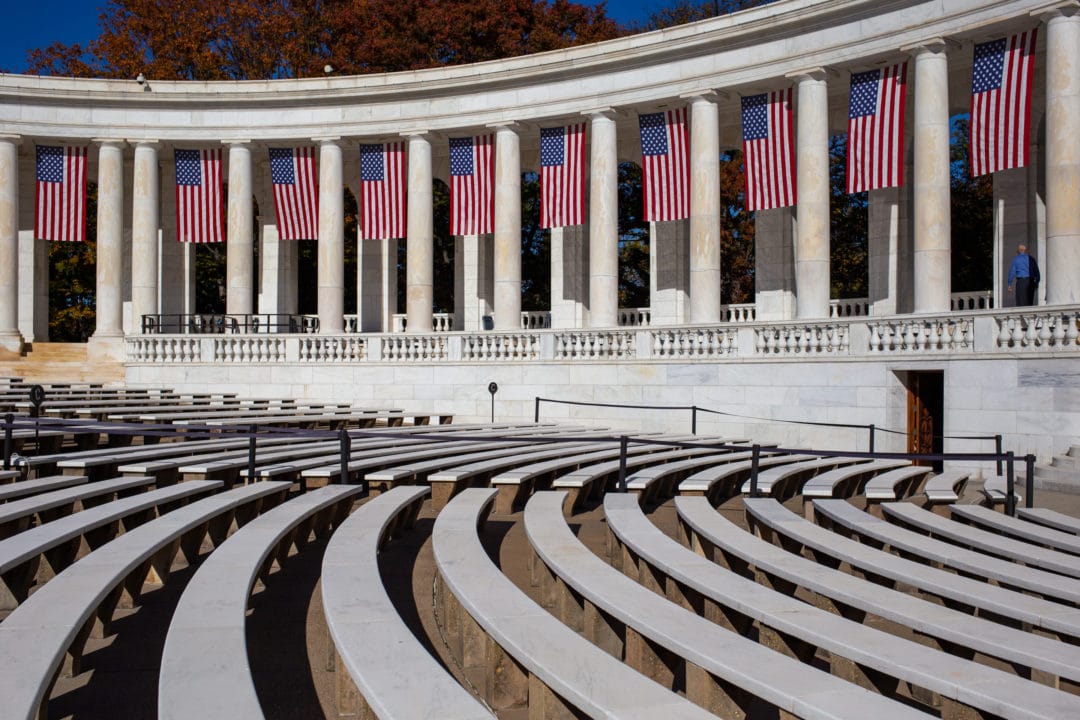
Less than half a mile from the Kennedy plot, on a hill overlooking Washington, D.C., is the cemetery’s other main attraction, the Tomb of the Unknown Soldier. According to Arlington’s website, “Since November 11, 1921, the Tomb has provided a final resting place for one of America’s unidentified World War I service members, and Unknowns from later wars were added in 1958 and 1984.”
Military and school groups can participate in wreath-laying ceremonies at the tomb, but most visitors watch the ceremony (silently) from a designated viewing area. In September—for the first time in 84 years—all three soldiers at the changing of the guard ceremony were female. And earlier this week, the general public was able to walk on the plaza and lay flowers in front of the tomb as part of the cemetery’s Tomb of the Unknown Soldier Centennial Commemoration.
‘An American soldier known but to God’
Since 1926, soldiers have been assigned to guard the Tomb of the Unknown Soldier during daylight hours; in 1937, they became a 24/7 presence. The selection process is strict, and volunteers are extensively trained. Every hour on the hour from October 1 through March 31, and every half hour from April 1 through September 30, a Tomb Guard from the 3rd U.S. Infantry Regiment, known as “The Old Guard,” marches 21 steps. They turn and face east for 21 seconds, north for 21 seconds, and then take another 21 steps (symbolizing the military’s highest symbolic honor, the 21-gun salute).
To commemorate the 100th anniversary of the tomb, on November 9 and 10, the public was invited to walk onto the plaza and lay flowers at the base of the white marble sarcophagus bearing the inscription: “Here rests in honored glory an American soldier known but to God.” On a sunny and warm Tuesday, a long line of visitors snaked around the Memorial Amphitheater; some brought their own bouquets, but volunteers handed out roses, daisies, and carnations free of charge. The pink carnations, symbolizing a mother’s love, were specifically requested by Tomb Guards, who often hear visitors lament the loss of their beloved sons.
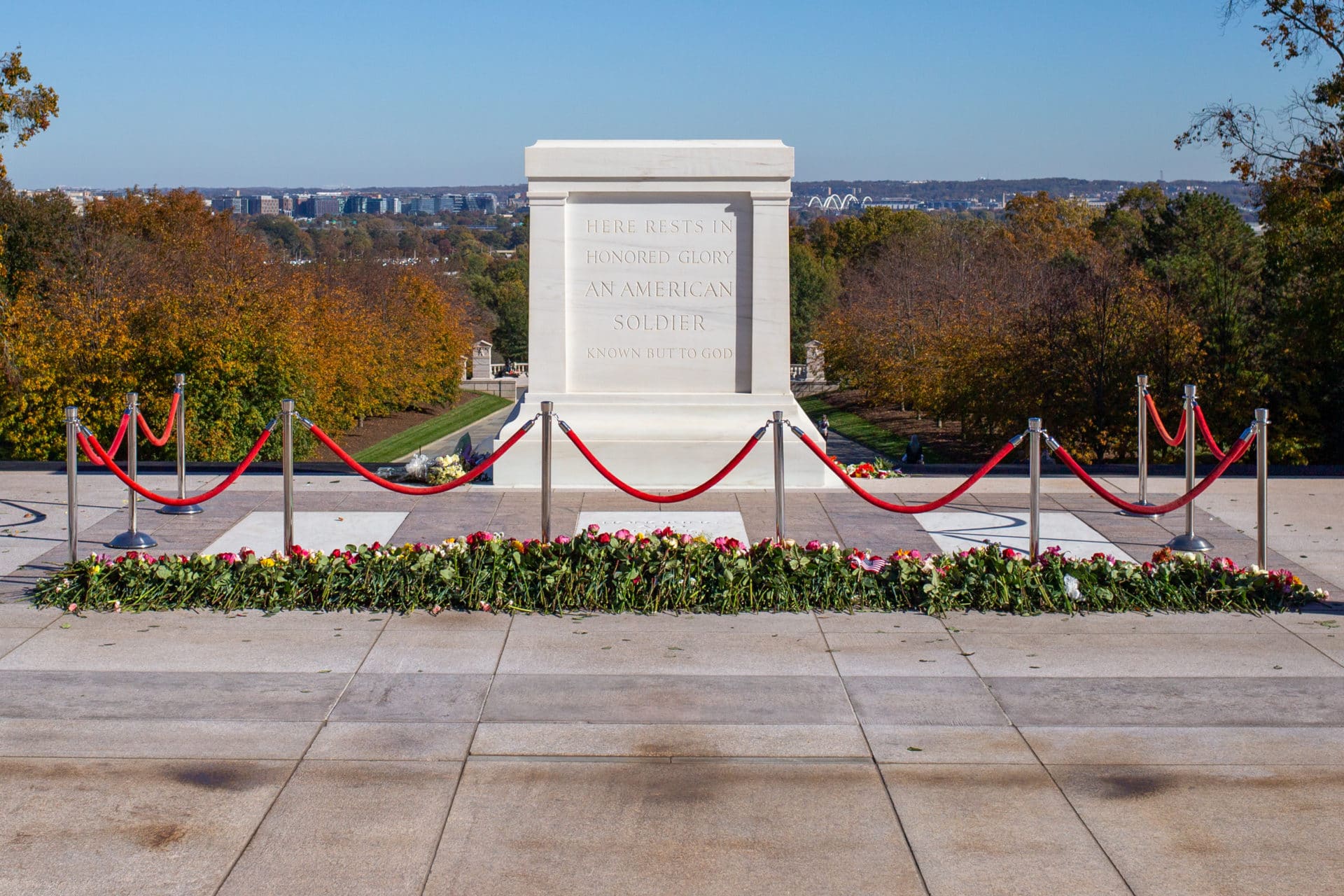
People traveled from all over the country to participate in the centennial event, including families with young children, veterans, and Boy Scout troops. Active duty soldiers in fatigues and dress uniforms offered their solemn salutes as Tomb Guards completed their 21-step ritual on the hour. To accommodate the crowds, the changing of the guard ceremony was slightly modified, taking place behind the tomb while visitors laid flowers at the front.
Arlington House and astronauts
At the beginning of the Civil War, most of the people who died near Washington, D.C., were taken to cemeteries near Rock Creek or in Alexandria, Virginia. But by the early 1860s, both were nearing capacity. The Arlington property was chosen partly because it was on high ground, protecting graves from potential floods and providing scenic views.
Located atop a hill just above Kennedy’s gravesite, with sweeping vistas of the Potomac River, the Washington Monument, the Lincoln Memorial, and the National Mall, sits the Arlington House. The grounds surrounding the white Greek-Revival mansion were also attractive as the future site of a national cemetery, in part to prevent the home’s last occupant, Confederate Army General Robert E. Lee, from returning to Arlington after the war. It was originally built by George Washington Parke Custis, adopted son of the George Washington. Custis’ daughter, Mary Anna, married Lee in 1831 and they lived at the house until 1861.
Today, tickets are required to visit the house, which is managed by the National Park Service (NPS). According to the NPS website, “It honors [Lee] for specific reasons, including his role in promoting peace and reunion after the Civil War. In a larger sense it exists as a place of study and contemplation of the meaning of some of the most difficult aspects of American history: military service; sacrifice; citizenship; duty; loyalty; slavery and freedom.”
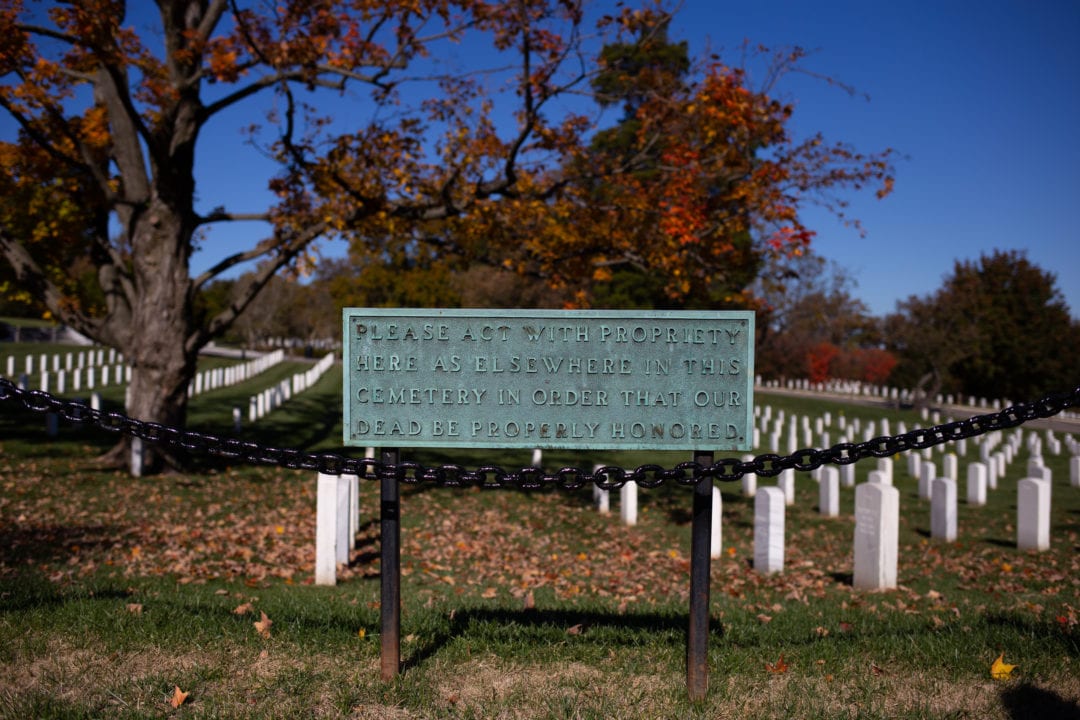
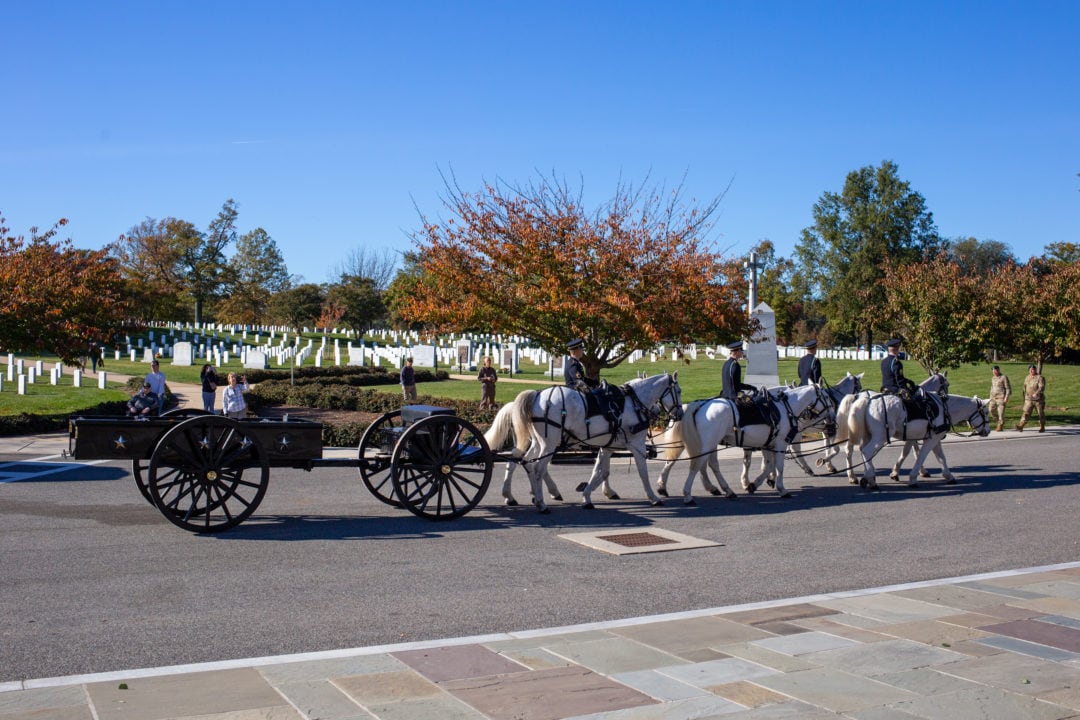
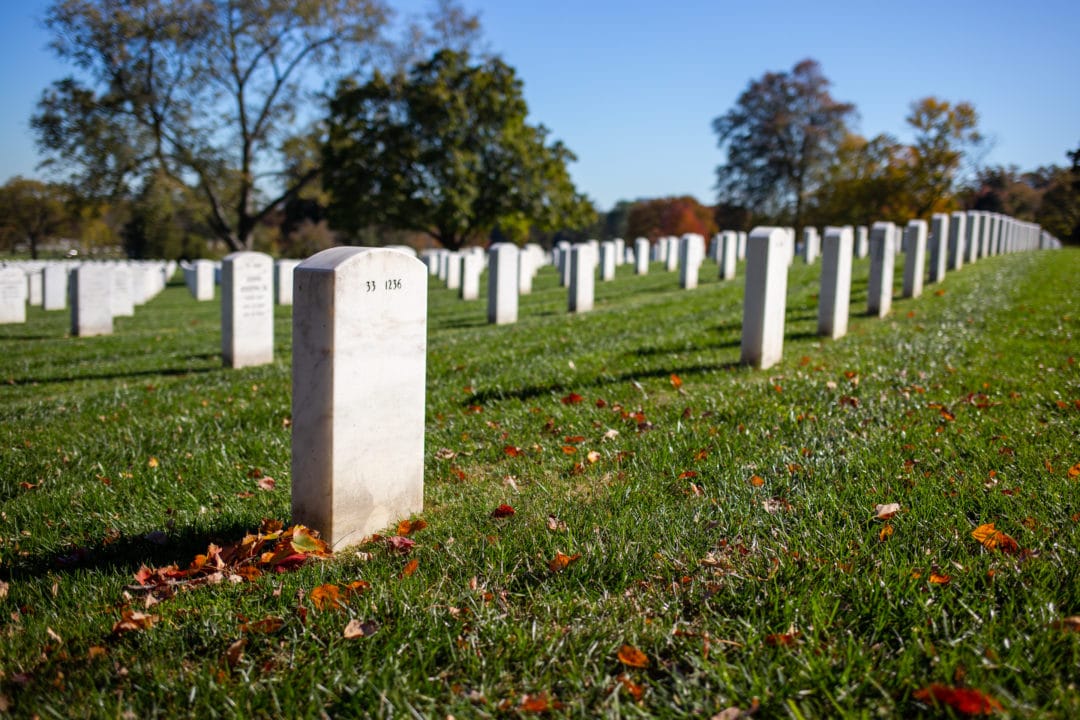
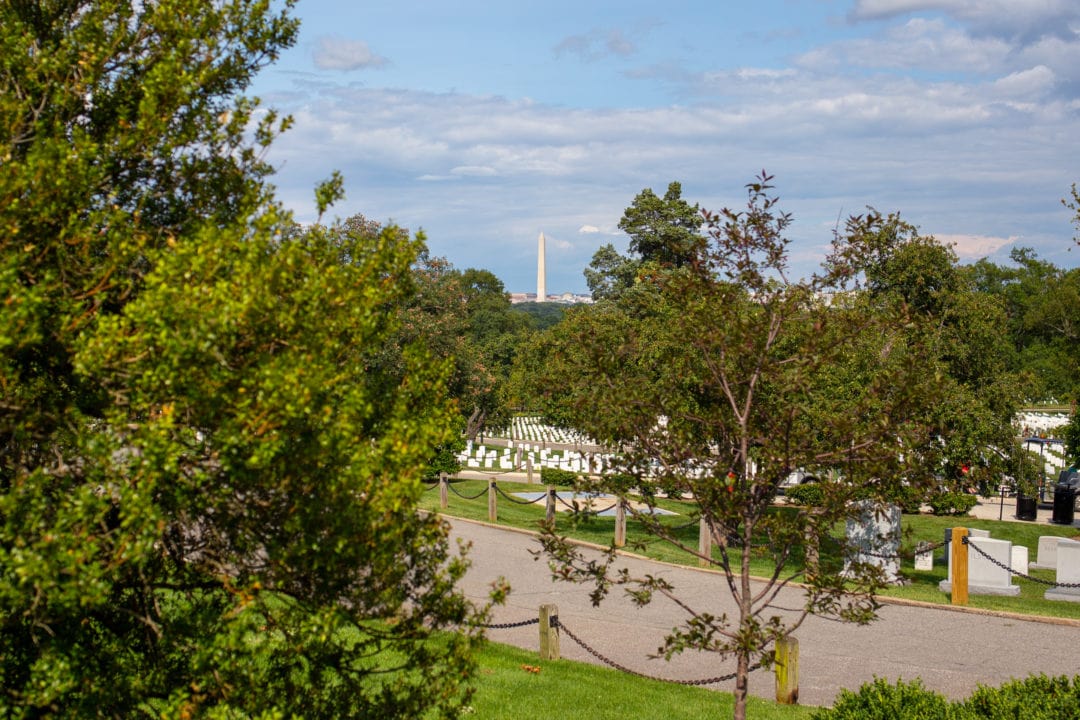
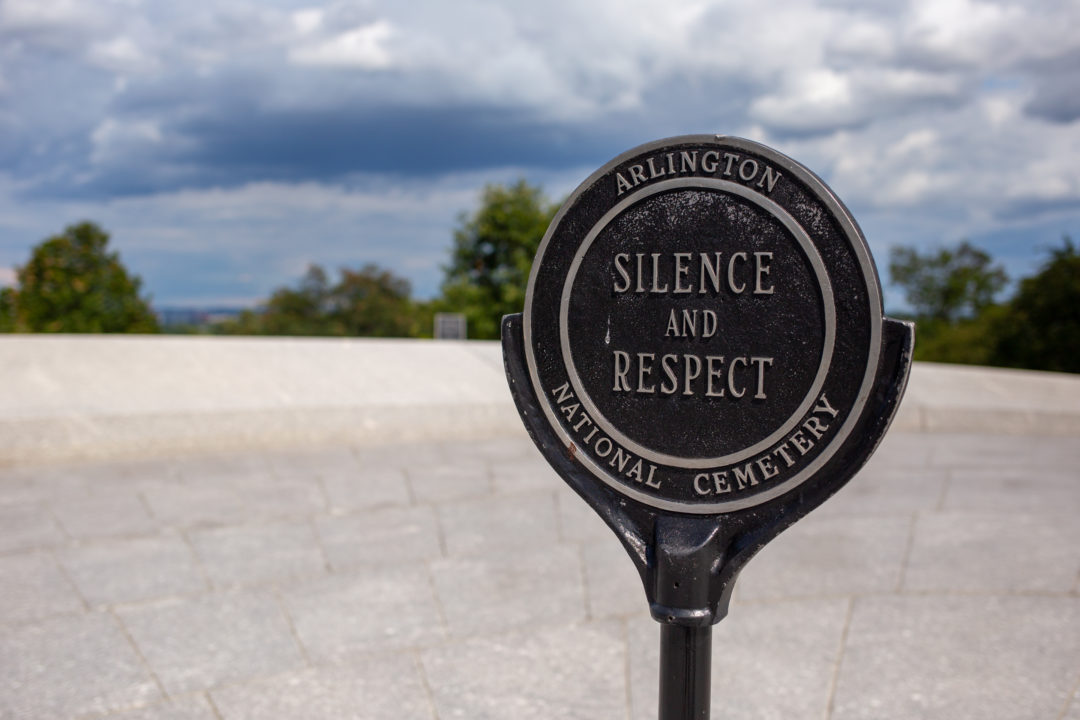
The first soldier buried at Arlington was Private William Henry Christman, a Pennsylvanian, on May 13, 1864. Several astronauts are interred here, including two who were killed in the 1967 Apollo I mission. John Glenn, who served as a U.S. senator from Ohio after becoming the first person to orbit the Earth, was buried here in 2017. Although all U.S. presidents, regardless of military service, are eligible, Kennedy is of only two buried at Arlington (the other is William Howard Taft; Woodrow Wilson is interred nearby at the Washington National Cathedral).
Divided into 70 sections, the cemetery has specific areas for military nurses and chaplains, formerly enslaved people, and Confederate soldiers. In 1948, President Harry S. Truman issued an Executive Order officially desegregating the cemetery. Until 2001, privately-purchased markers were allowed, but the 639 acres are mostly studded with small, nearly-identical white stones. Several faith emblems are permitted, including Christian, Lutheran, and Russian Orthodox crosses, the Star of David, and an atom-like symbol for atheists. In 2007, the United States Department of Veterans Affairs added the Wiccan pentacle to its list of approved symbols, after a lawsuit brought by the family of a soldier killed in Afghanistan.
Eternal flame
After her husband’s sudden death, Jacqueline Kennedy consulted with her brother-in-law, Robert F. Kennedy, and Secretary of Defense Robert McNamara on a suitable (publicly-accessible) location for the Massachusetts-born president’s gravesite. They chose wisely: Almost 3,000 people per hour visited Kennedy’s gravesite in the year following his death. From 1964 to 1967, more than 16 million people visited the cemetery, which is separated from downtown Washington, D.C., by the Potomac.
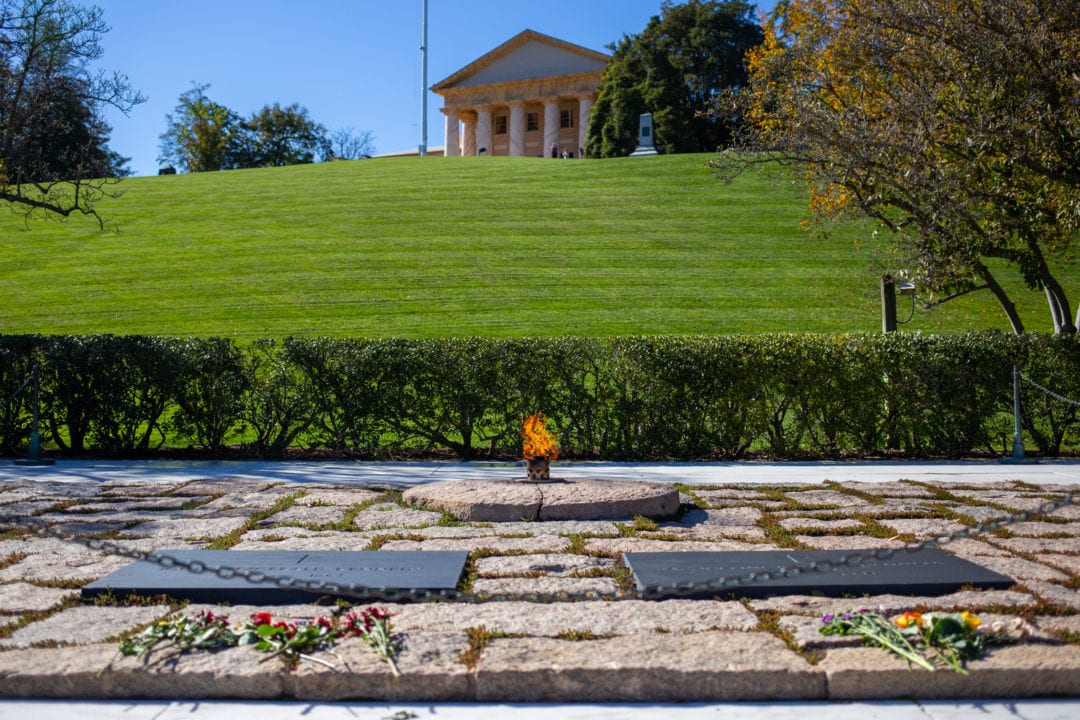
Lit by Jackie Kennedy during her first husband’s funeral, the gas-fed eternal flame now burns from the center of a 5-foot circular granite stone. When she died in 1994, Jackie was interred next to JFK, their 2-day-old son Patrick, and stillborn daughter Arabella (JFK Jr.’s cremains were scattered at sea after he died in a 1999 plane crash). Just a few months after her death, Jackie’s grave was identified with a temporary plastic marker; it’s since been replaced by a modest, more permanent, flat black slate stone.
To accommodate the influx of visitors, a new, larger site was completed in 1967 (near the original) for the 35th president and his family, including his brothers: RFK was assassinated in 1968, and former U.S. Senator Edward M. Kennedy died in 2009. Today, more than 4 million people visit Arlington National Cemetery annually—and almost all of them follow the signs or snaking lines of tourists to pay their respects, take in the views, or simply marvel at the eternal flame, which has (almost) never stopped burning bright.
If you go
Arlington National Cemetery is open daily from 8 a.m. to 5 p.m.
